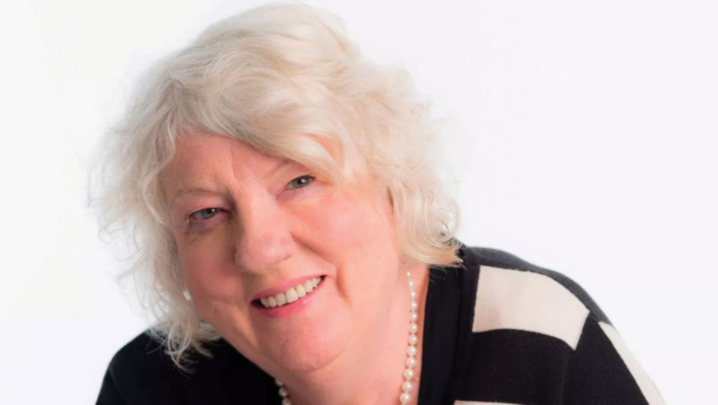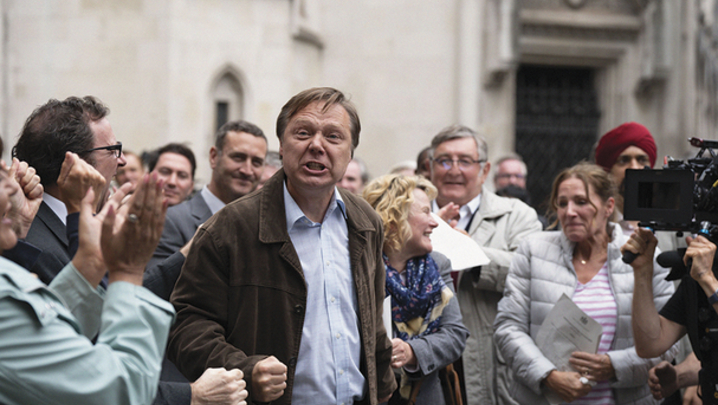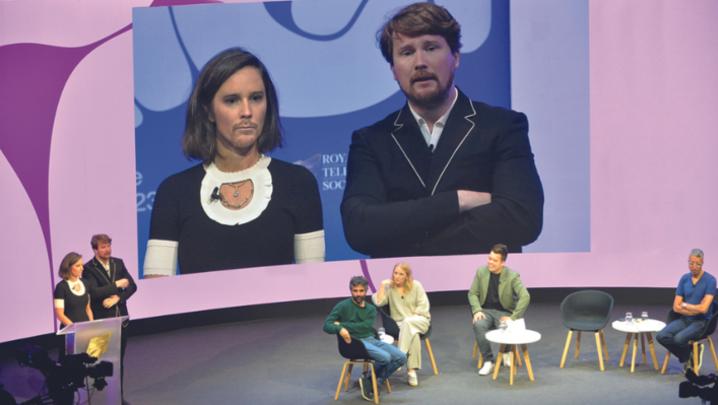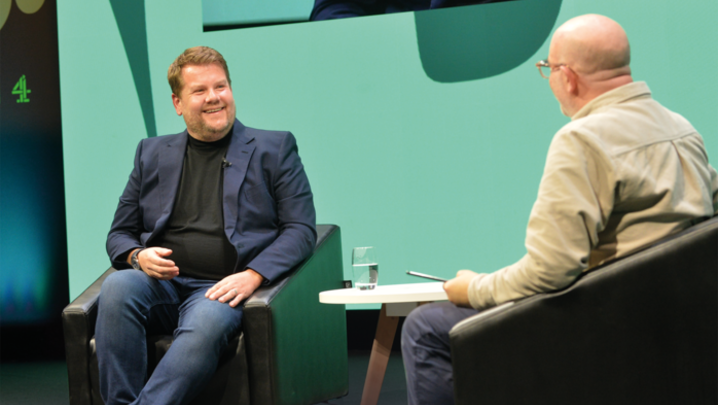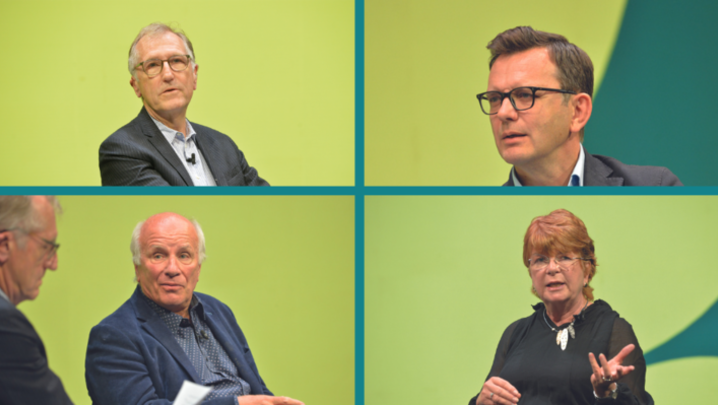S4C Chief Executive Owen Evans talks about embracing TikTok, supporting local indies and flying the flag for Wales’s indigenous tongue. Interview by Matthew Bell
This month, Owen Evans celebrates three years as Chief Executive of S4C.
It’s been “a very busy time”, says Evans, pointing to a move to a new Carmarthen HQ, a deal with the BBC to broadcast from the corporation’s new Central Square base in Cardiff and improved digital services.
These initiatives were all long in the planning, unlike the channel’s response to March’s coronavirus lockdown, which blew large holes in its schedules. S4C lost its live sport immediately and then its soaps, Pobol y Cwm and Rownd a Rownd, which returned to screens only last month. Two rapid commissioning rounds helped to fill the gaps.
S4C serves 500,000 Welsh speakers in Wales and a further 150,000 across the rest of the UK. “The Welsh language isn’t just about our communities here, there’s a digital diaspora around the world who are keen to get Welsh [shows]. It’s very much a living language,” says Evans.
“I was brought up in a Welsh town, I’ve worked across the UK and I’ve come back to the language, like a lot of people do in later life. It’s a real privilege to be fighting for something you believe in.”
Evans joined S4C from the Welsh Government, where he had responsibility for education and public services. The closest he came to a TV job was working at BT for a decade, where part of his role covered broadband strategy.
But he is adamant that a lack of television experience has been no hindrance: “Someone [in TV] said to me, ‘Once you’re in the media, you’ll never go back.’ And that’s been the case. I’ve loved it and learnt so much.”
Two years ago, the channel’s digital output was criticised in an independent review, commissioned by the Department for Digital, Culture, Media and Sport and led by Euryn Ogwen Williams, S4C’s first director of programmes when the channel launched in 1982.
“We’ve transformed our digital footprint and are now on multiple platforms,” says Evans. Youth-focused online service Hansh, which is dis- tributed on platforms including TikTok, Facebook and YouTube, has seen monthly views grow from just 40,000 in 2017 to 1.5 million.
“The youth audience is vital for the supplier of any service because you’ve got to shore up your future audience, and it’s doubly so for the Welsh language because, if we’re not getting through to that audience, then the danger of the Welsh language actually dying is amplified,” says Evans.
S4C’s linear-TV service, however, faces a very different challenge: its audience is typically older and more rural, with programmes to match. “I would like us to be a bit of an enfant terrible, but I wouldn’t want to disrespect those people who fought for the channel to be set up almost 40 years ago and are the people watching us on the linear channel.”
Evans promises that the linear channel will continue to serve the older generation, but it will also showcase more challenging programmes.
Welsh, he points out, is widely spoken outside rural Wales – notably in Cardiff and Swansea, in the UK and beyond. “As well as our heartland communities, we also have this new digital diaspora – it could be in Cardiff or in Copenhagen – and we need to give them the type of content that modern urbanites, as well as rural people, want to watch.” While audiences have been, at best, stagnant in Wales in recent years, S4C has grown its reach across the UK via its VoD service, S4C Clic, and other digital services.
Is Evans irritated by persisting stereotypes of the Welsh? “What do I think about the hackneyed view of Welsh people, that we turn up and sing around coal fires? Yeah, it happens – I grew up in Aberystwyth and everyone sang in the pubs there. But Wales has got so much more than coal, choirs and rugby. It’s a modern country with an outward-looking vibe to it. We have to reflect that.”
Another challenge for S4C is airing shows that reflect the wide linguistic range of its viewers.
“I want to welcome learners to the language – there’s nothing more beautiful than someone learning God’s own language,” says Evans. “We used to ghettoise learners on Sunday morning but now we have peak-hours programming where the language is simplified. The language is there for all, it shouldn’t be something that divides a nation, it should be something that brings people together.”
The lockdown hit Iaith ar Daith (Welsh Road Trip) featured five celebs, including Ruth Jones and Adrian Chiles, travelling across Wales to learn about the language with Welsh-speaking mentors
in tow.
When the UK went into lockdown in late March, S4C acted quickly to protect its local independent producers. “Within two or three weeks of lockdown, we’d already pumped an extra £7m into commissioning. We realised that things were tough out there and nothing helped mental health better than being able to pay the mortgage.
“We tried to put as many pounds as we could back into the sector so that [companies] could be producing and employing,” recalls Evans, who is hugely grateful to Wales’s indie sector for its positive response.
One of the first fruits of lockdown commissioning was a three-part drama from Keeping Faith producer Vox Pictures, Cyswllt (mewn Covid) (Connect During Covid), examining people’s feelings of loneliness and hope. (The third and final series of the Eve Myles drama Keeping Faith airs this autumn.)
Productions at many of S4C’s 50-odd suppliers – which range from one-man bands to larger indies – has resumed, but local lockdowns, which are increasing in number, have disrupted filming. “It’s possible to shoot but we’ve got to ask ourselves: should we be shooting in certain places? We’ve also had to cancel productions at an hour’s notice when people have tested positive,” says Evans.
S4C programme budgets are typically a fifth of other UK national channels. This means that it relies on good- will from local authorities and communities to film. “If you’re in an area that is a Covid blackspot, the last thing you want to see is a big TV crew turning up.”
But S4C also has a duty to protect Wales’s indigenous TV industry and keep pro- ductions ticking over: “Let’s face it, other broadcasters come and go but producers in Wales rely on S4C.”
Next up for Evans is the TV licence settlement for 2022 and beyond, and negotiating S4C’s share of the pot. The Welsh-language broadcaster is now funded entirely from the licence fee, receiving just over £80m – a drop in the ocean compared with the £3.8bn the BBC receives.
“The Welsh language isn’t the most commercial language to operate in, because of the small size of the population,” says Evans.
“There are a number of things that we do that nobody else is going to pro- vide, so we’ve got to show the value in that.”
Photo credit: S4C



